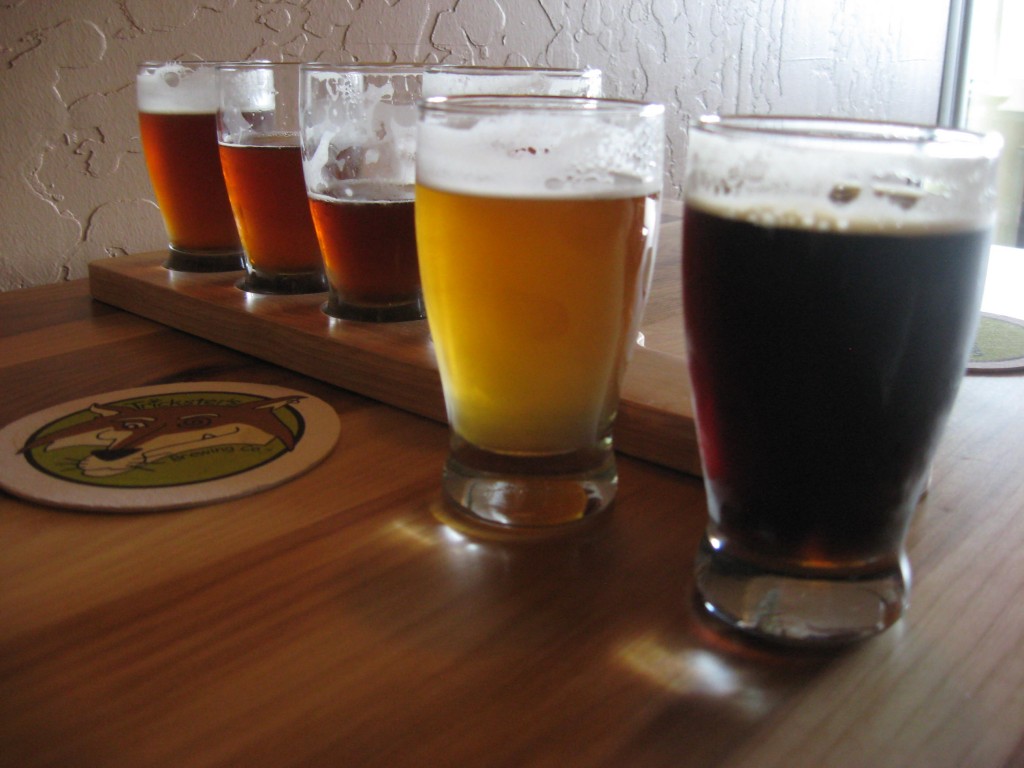
Without intent, I have collected well over 1,000 beer bottles since the early 70s. When something finally had to be done about the cheap paneling in this old modular, I had a choice. Tear down the walls while, oh, so carefully, replacing the often rotted 1X3s. Or: cover them with… The Bottle Collection.
Written by Ken Carman
The growler you see above is from a brewpub that went dark: and I don’t mean “dark beer,” and then reopened as “Blue Canoe.” I haven’t been back and I’ve been told there’s a new brewer who is still getting use to the concept of brewing.
Yes there is a smudge in the growler I couldn’t get out. I bought it as a collector’s item so, like a lot of my growlers, it has never had beer in it.
Below you will find a review I did, I believe it was in the 2006 Fall edition of the Score; a publication of The Music City Brewers .
Brew Biz: Werts and All
by Ken Carman
Four Sons Brewery
113 S. Franklin Street
Titusville, PA 16354
(814)827-1141
http://www.foursonsbrewery.net/index.phpBrewer: Doug Caldwell
Titusville Lager
Plissken Lager
Heavy K (Wee Heavy)
Rebecca’s Revenge (Schwartzbier)
Other beers sampled that day…
(peat) Rye PA, smoked Amber (YUM!), Oat Coffee Stout
Where the hell is Titusville, PA?
Continue reading “From the Bottle Collection and From the Brew Biz Archives”










You must be logged in to post a comment.